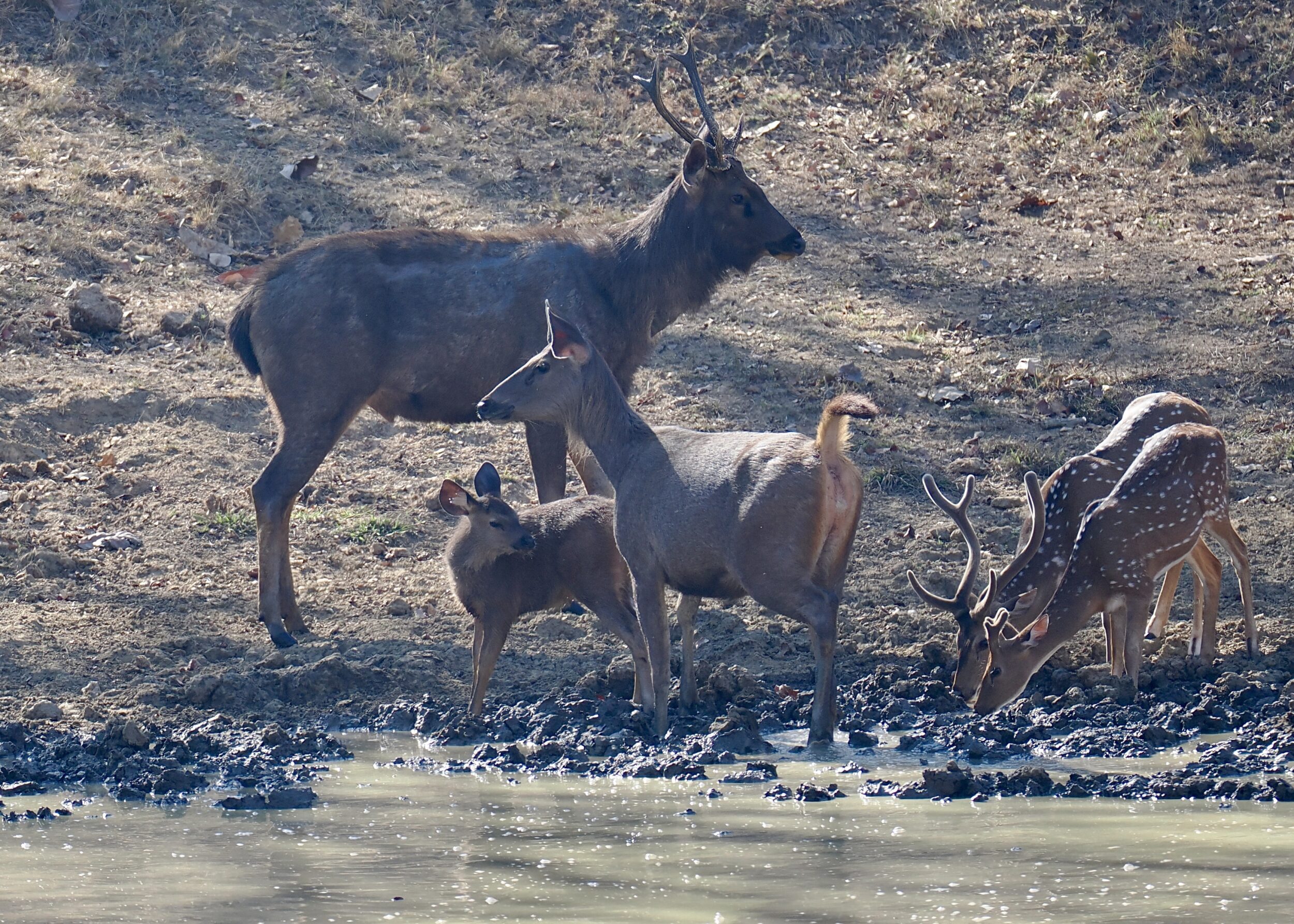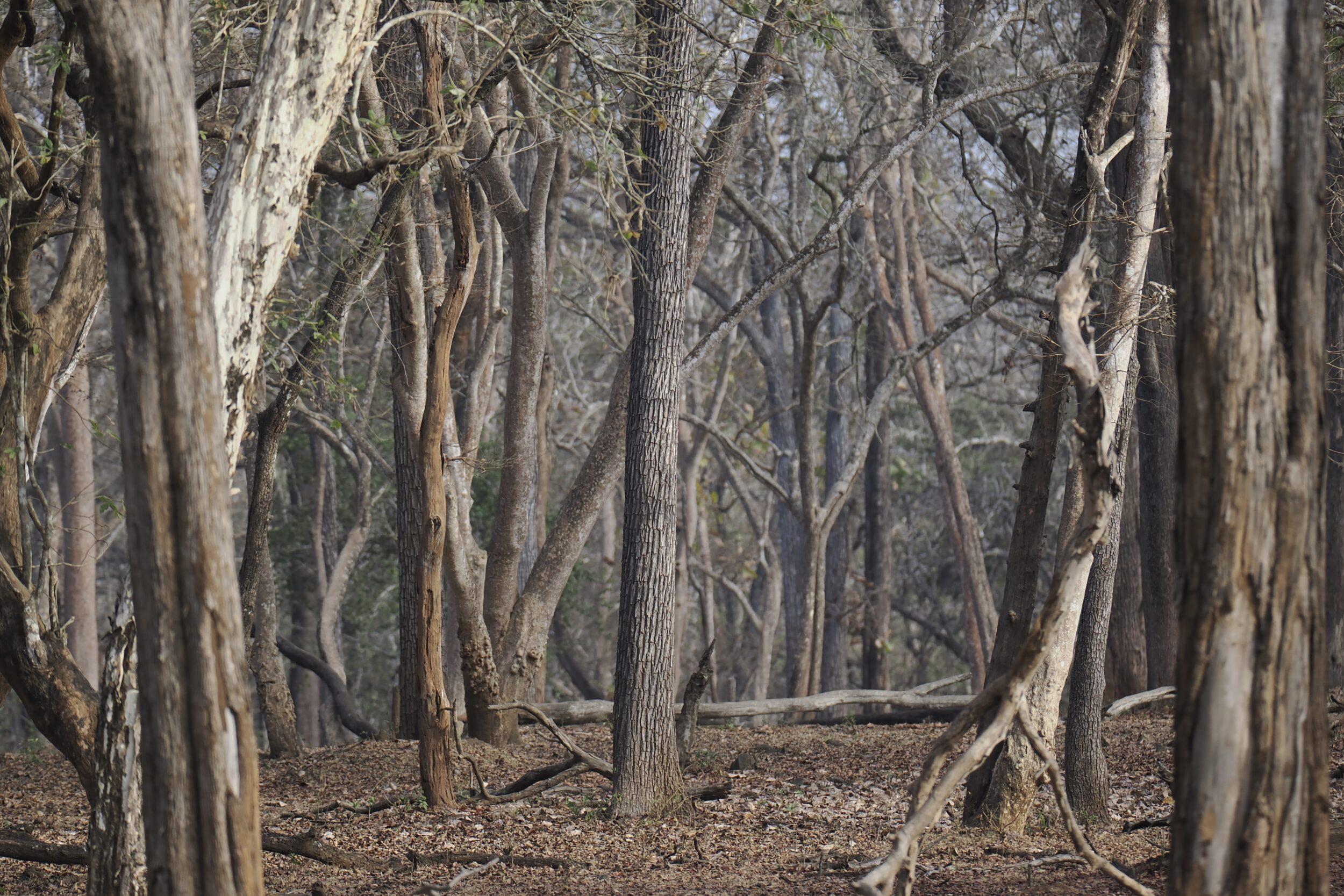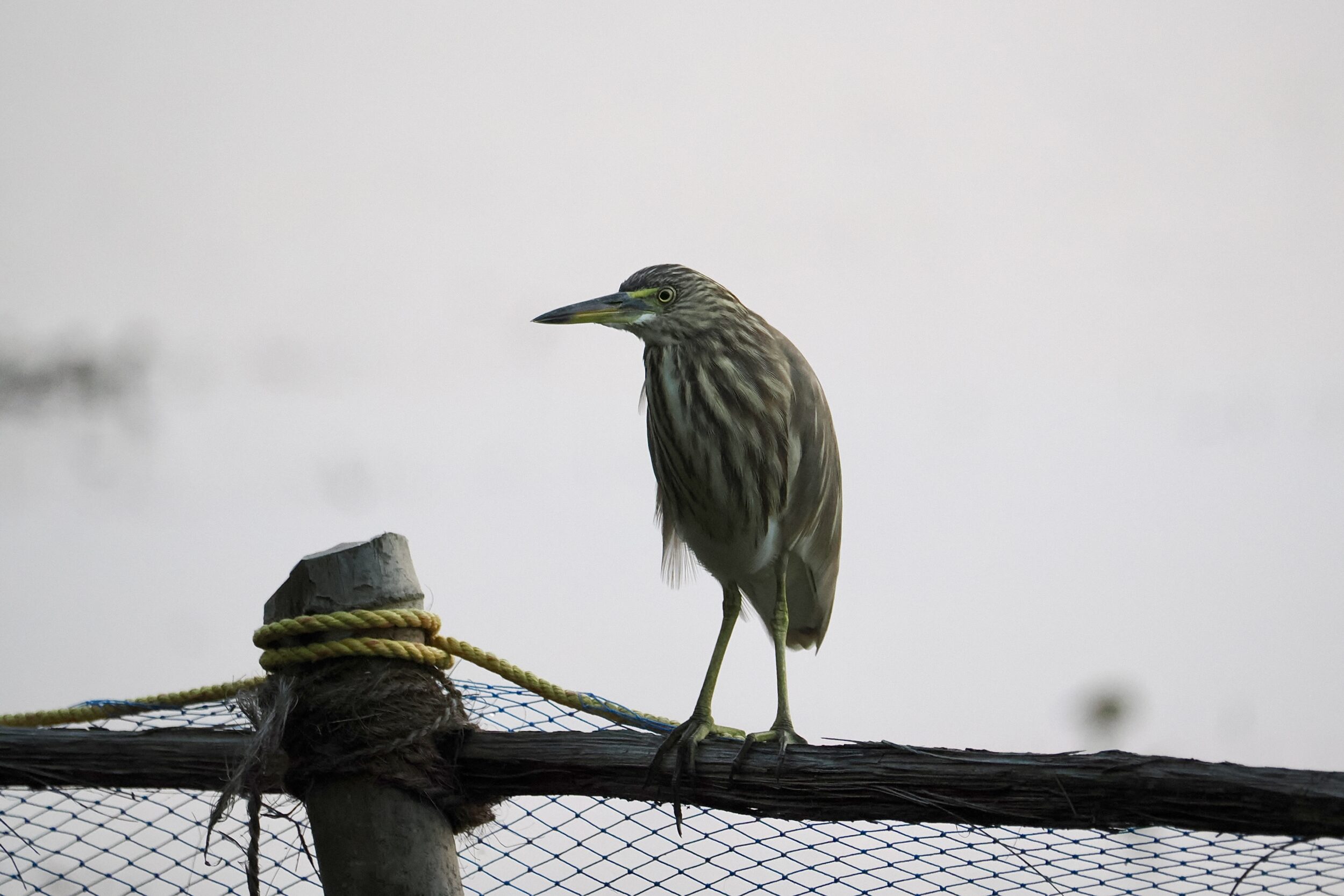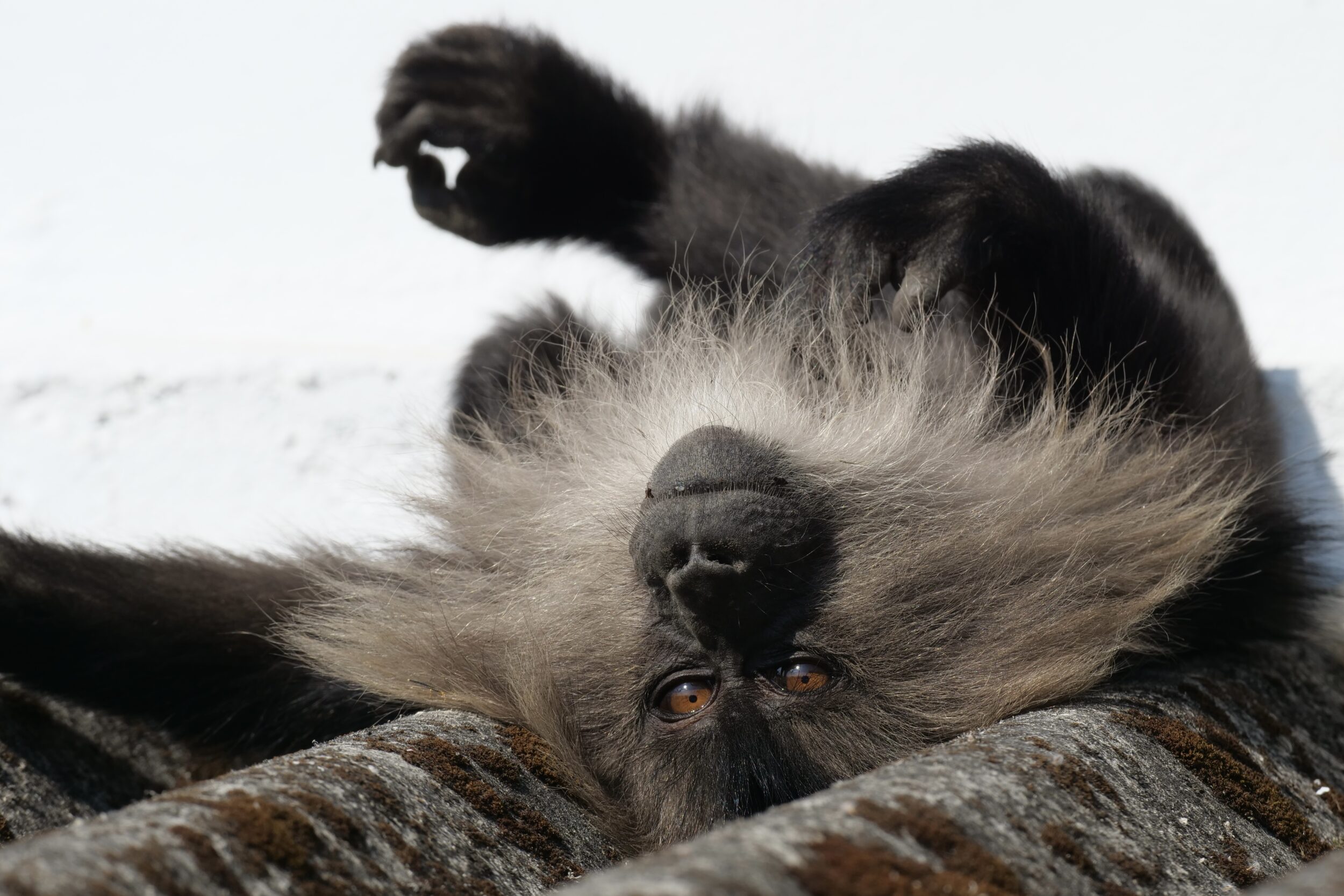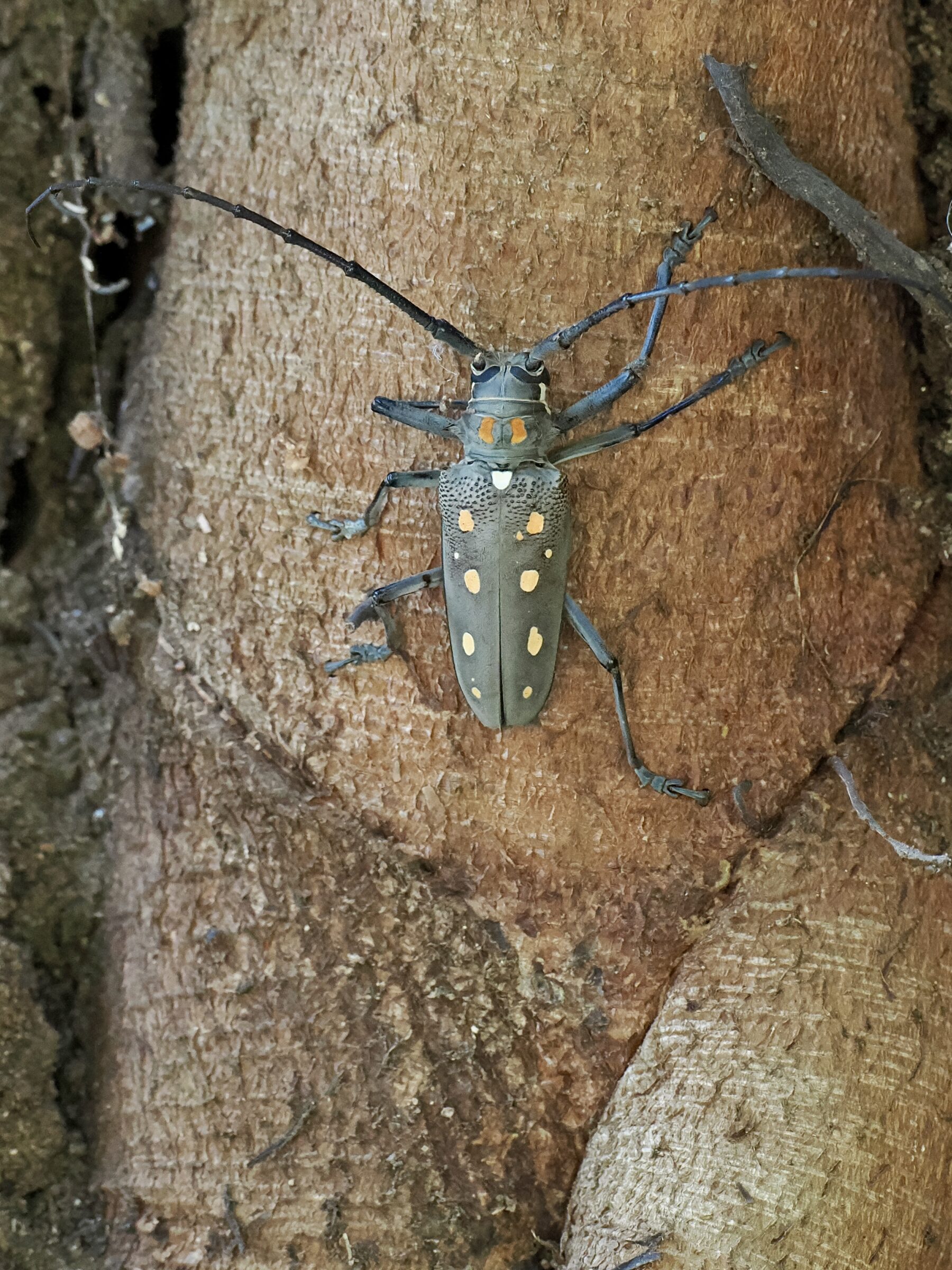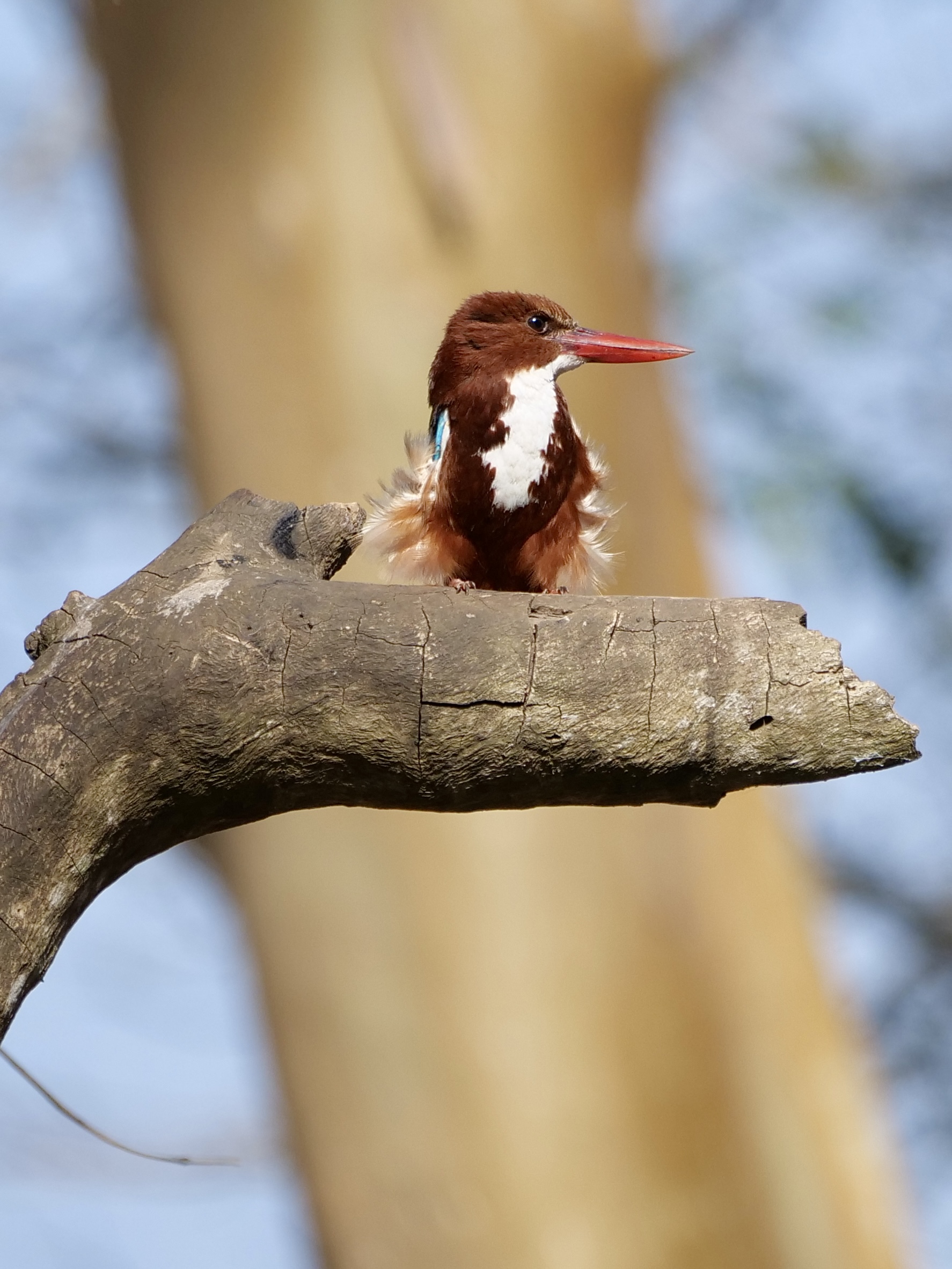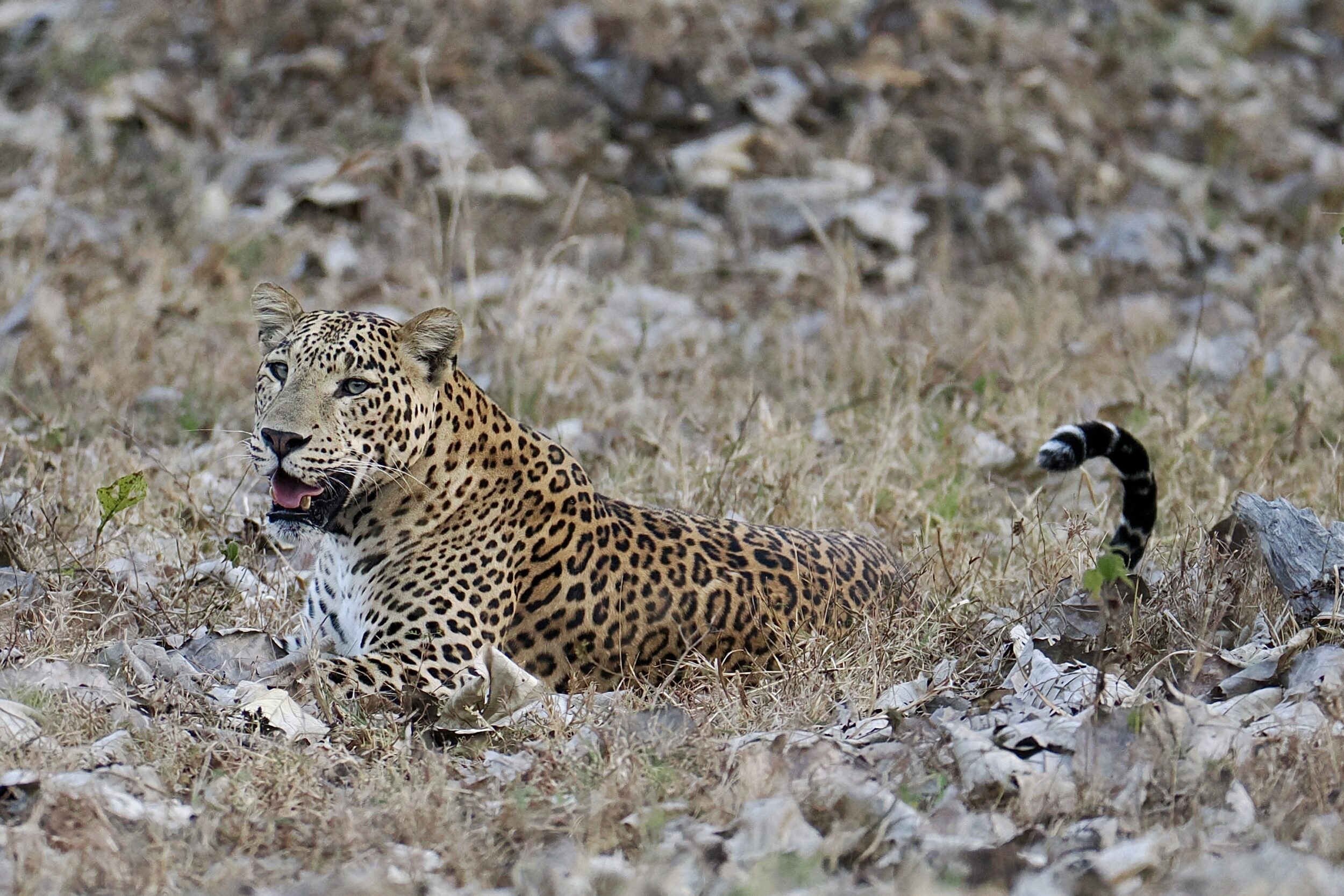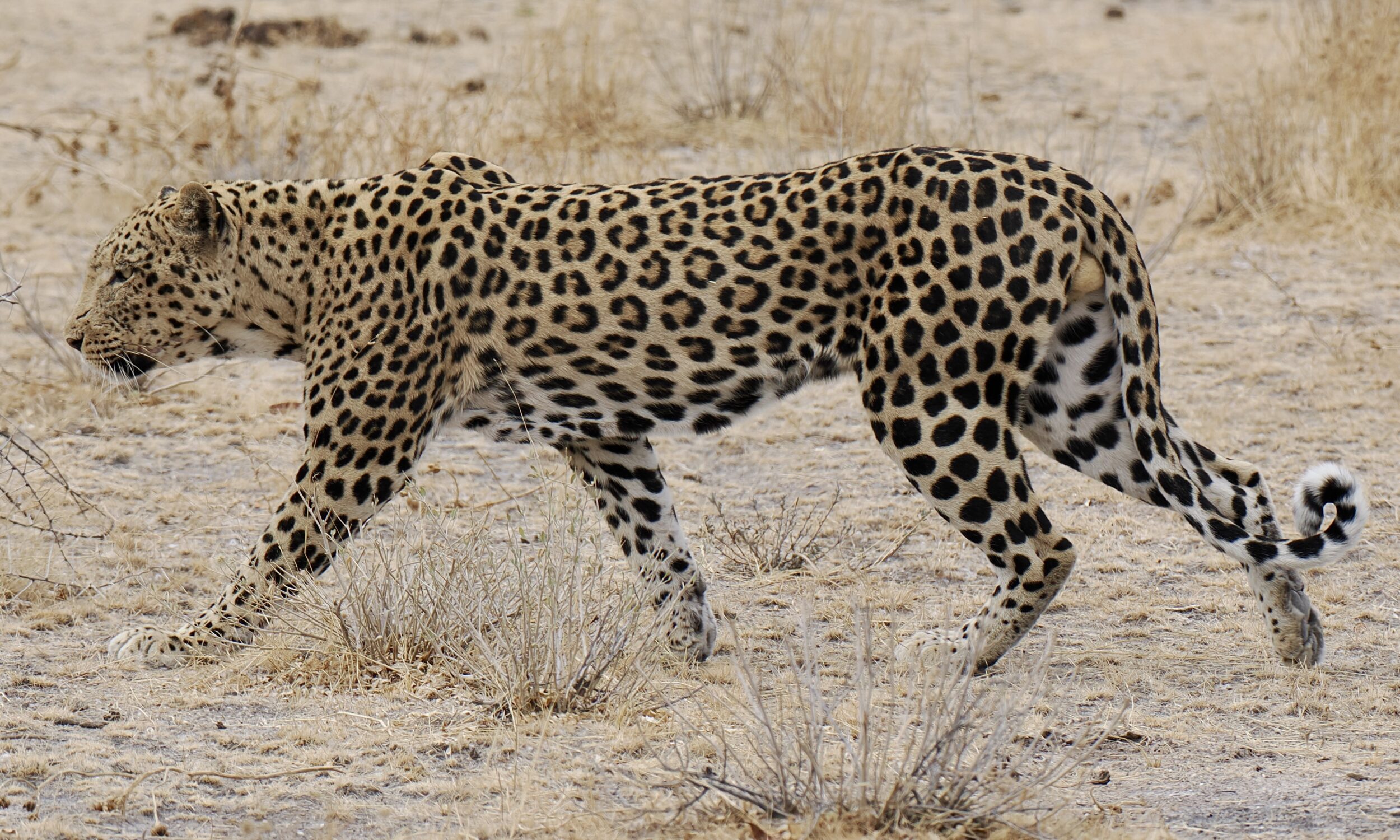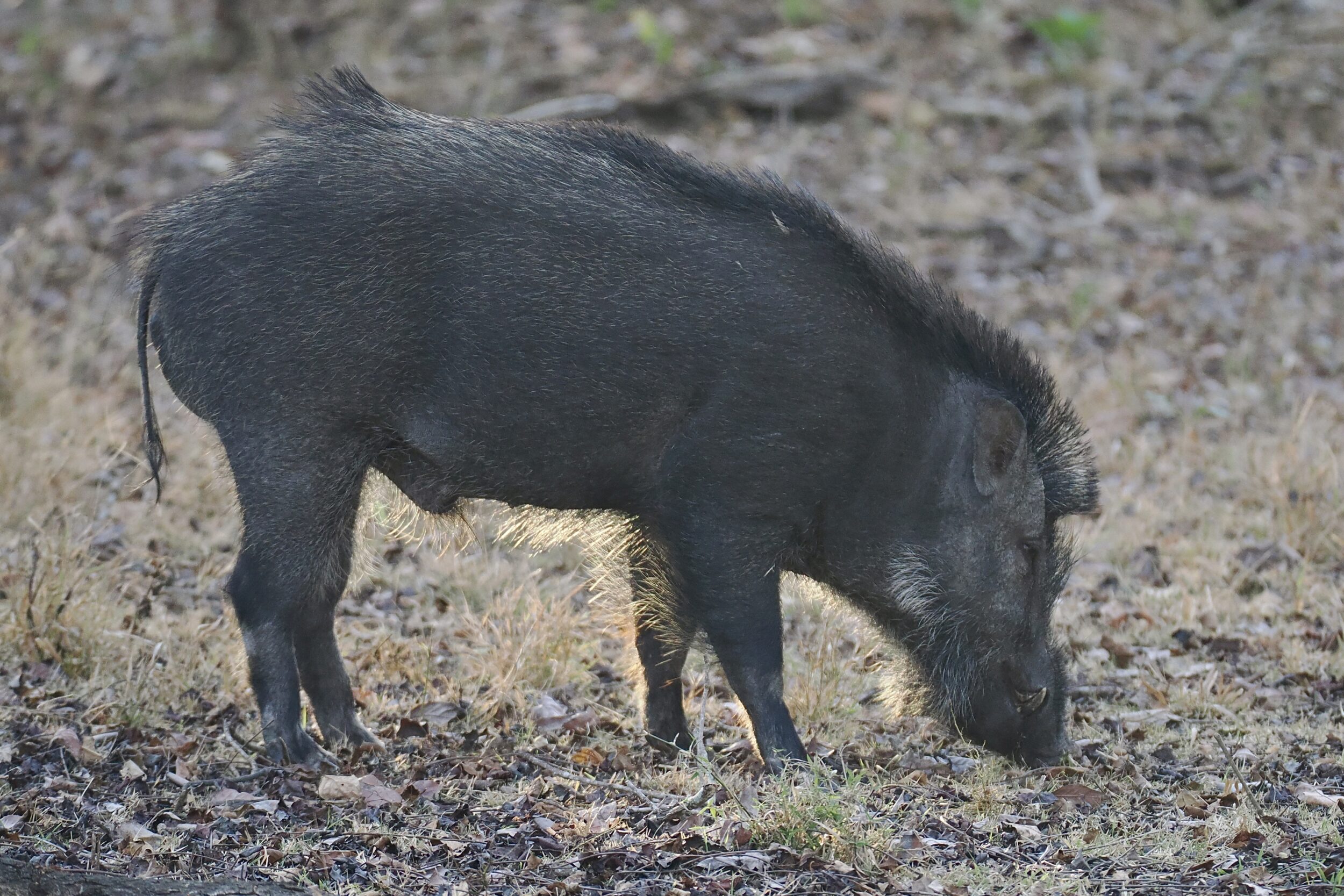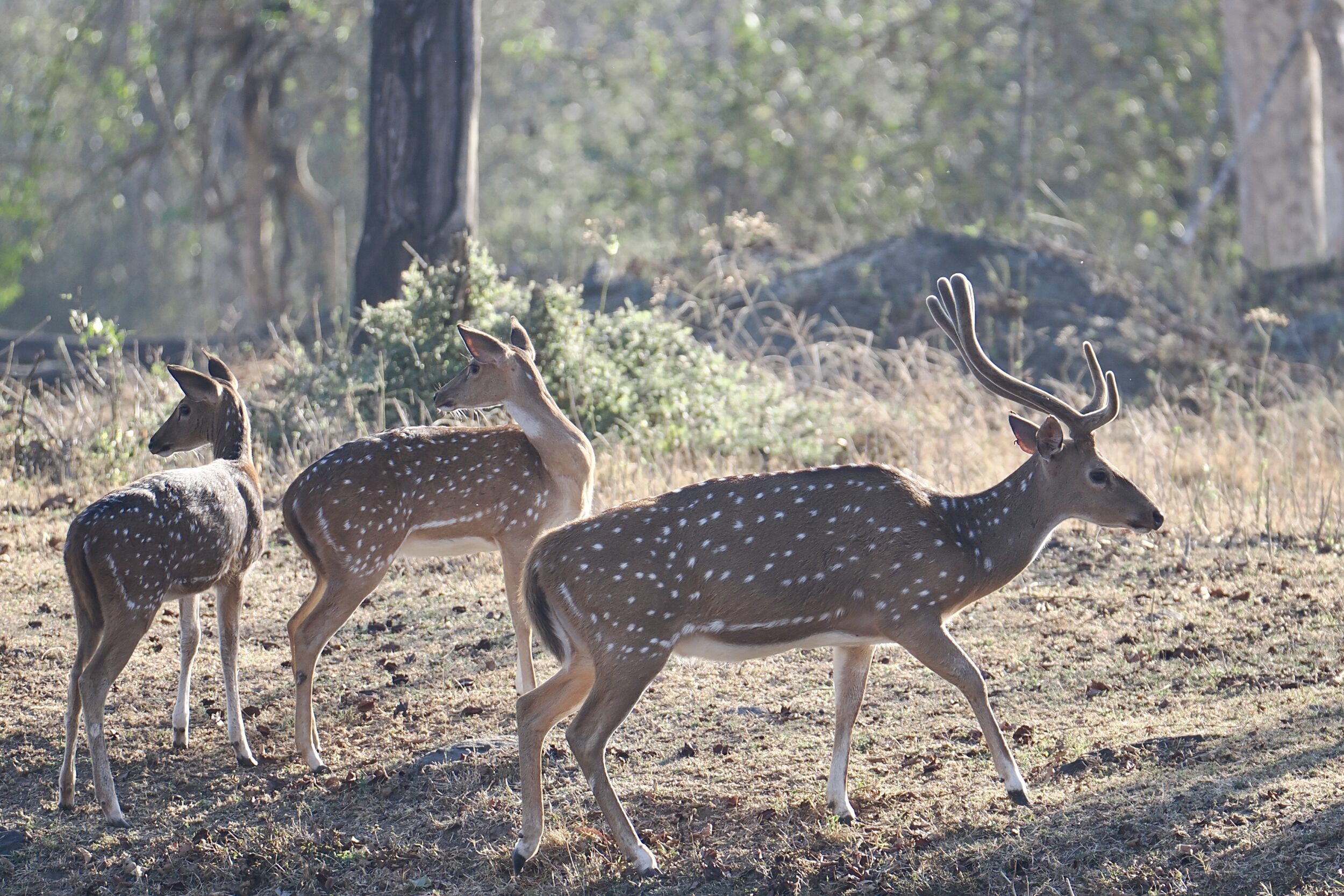Imagine an English-speaking tiger, asked to describe the deer in this post’s featured image.
”Delicious”, might be the tiger’s reply.
You are looking at #1 and #2 on the list of species most preyed on by India’s tigers – respectively, sambar and chital/spotted deer.
As you can see, all five deer are definitely not relaxed.
Drinking and having “a good look around” are not simultaneously-possible; the pictured chital are in “eyes down” mode.
The sambar calf is looking at its mother.
However, you can see that the ears of all five deer are open, alert.
If you wish to see tigers (or leopards) in the wild, your ears are your most useful organs.
Big cats’ hunting success is stealth-dependent; they are highly unlikely to make sounds that betray their presence.
Your very quiet self should be focused on hearing the alarm calls which “prey” animals make whenever they notice a predator.
Comments closed